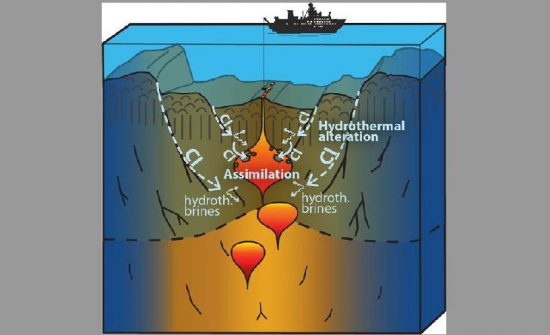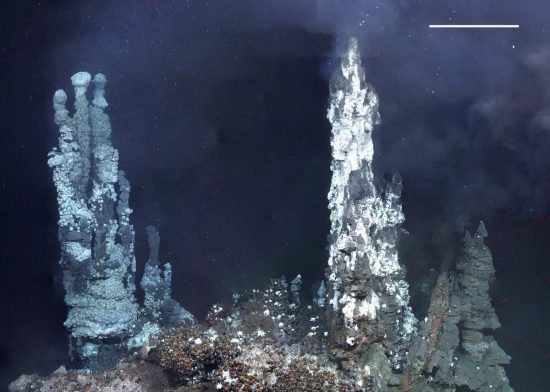




Seawater penetrates much deeper than expected
How deep can seawater penetrate through cracks and fissures into the seafloor? Using a new analysis method, an international team of researchers, led by the GEOMAR Helmholtz Centre for Ocean Research Kiel, has discovered that the water can penetrate more than 10 kilometres below the seabed. This subsequently results in a more prominent cooling effect on the hot mantle. The results of their study was published in the journal Contributions to Mineralogy and Petrology.
Hot vents in the deep sea, as well as geysers on land, document the penetration of water into the earth’s layers, which already experience very high temperatures. This takes place primarily in regions where the earth's crust breaks up and there are magma chambers close to the surface, such as mid-ocean ridges. But how deep does the water penetrate through cracks and cool the upper part of the hot mantle? So far, it has been assumed that this process only reaches a few kilometres. A new analytical method developed at GEOMAR now shows that water penetrates much deeper into the crust than previously thought.
"Chlorine is the key element in our investigations," explained Dr Froukje van der Zwan, first author of the GEOMAR study. "We were able to detect this indicator for seawater in basalt rock even in very low concentrations," she continued. She developed a new method of studying the chlorine levels in rock samples collected at the Southern Mid-Atlantic Ridge and Gakkel Ridge in the Central Arctic. In addition, a chemical analysis of selected crystals in the investigated rocks also reveals the depth at which the chlorine was incorporated into the rock.
“For our analyses, we had to push the electron-beam microprobe to its limits. It is a special scanning electron microscope, to which spectrometers are attached for the quantitative analysis of major, minor and trace element concentration,” said Dr van der Zwan. The microprobe, as well as other instruments devices, were available at the GEOMAR. Furthermore, the results of the study was used to verify theoretical models developed at GEOMAR.
"So far, it has been assumed that high pressure and temperatures prevented water from penetrating below 10 kilometres," said co-author Prof. Dr. med. Colin Devey. "We can now show that the water penetrates much deeper," Devey continued. This finding is important for the understanding of the cooling of the oceanic crust and its heat budget, as well as for the total level of volatiles in the oceanic crust, which are later subducted and recycled in the mantle.
 Herbert
Herbert 29th November 2017
29th November 2017